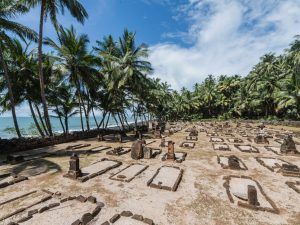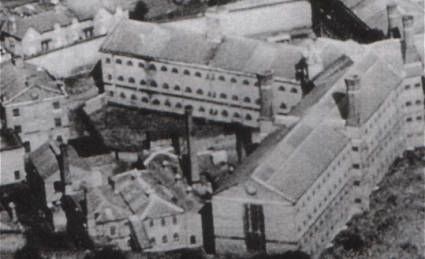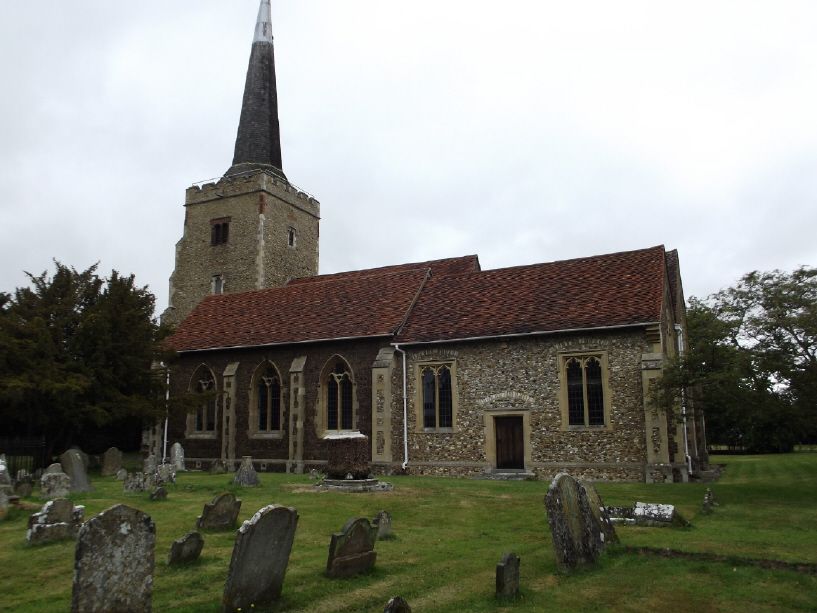Devil's Island

This week I have been focussing on Victorian prisons on my Haunted Histories social media, that to me would include any type of incarceration from that time period so I decided to get inventive, and one of the worst jails of that time seemed to be the notorious Devil’s Island – made famous in the book and film, Papillon.
Many seem to think of Alcatraz as being dark and foreboding, yet I would argue this place, built on one of the Salvation Islands in French Guiana is much worse. It started to be used in 1852, and whilst only originally envisaged as a place for political prisoners, it soon became home to all sorts including violent killers, thieves and every other criminal that you can think of. Over the one hundred years it was in operation, it is estimated around eighty thousand prisoners passed through its doors, however many never came out as the death rate was nearly seventy five percent.
That is quite shocking I think, but what may astound you even more – for a 19th century prison managed by a first world nation – was how the inmates were treated from the minute they got on the ship to take them to the island. They would be locked into cages that were held below deck, keep in mind it would have been hot, stuffy, rife with disease and the guards were not paid to care if you lived or died. Through each cage would have been a large hose, if you tried to escape your cage or were disruptive, steam would come bellowing out of the pipe not only scalding the unruly individual, but everyone else crammed in there. If that was not enough, the guards had another method…sulfur. There were metal shutters around each area, if prisoners were disrespectful or upset the keyholders in any way, the seals would go up, and burning sulfur sticks thrown inside.
You can only imagine what damage that, and the lack of general air circulation (not to mention hunger, thirst etc) would have done to them.
Once they arrived on the island, many initially thought it would be easy, after all, there were no walls, minimal supervision and you could roam pretty much anywhere…but it did not take long for them to realise that the island WAS the prison, there was really no escape. That being said, it was only during daylight hours that this restricted freedom was allowed, a witness to the methods employed said that they would be locked up in huts from six in the evening, until six in the morning. It does not take a genius to work out that forty men, hungry, annoyed and coming from a variety of not so salubrious backgrounds does not make for a harmonious residency. The authorities did try and improve the morale and morals of the men however, at one point in the 19th century, they brought across fifteen sex workers, who they hoped that some of the men would settle down with and have children. These women were looked after by nuns, but it was obvious that playing happy families was not on anyone’s mind, and quite quickly sex could be procured for rum, and a syphilis epidemic rampaged through the island.
Those who did decide to try the shark infested waters did not make it very far, those that did make it past that first sharp toothed hurdle had to then survive the jungle and tropical conditions of the mainland, with no tools or food, and certainly no one coming to their aid, they tended to perish.
There was a bell that was rung every time a prisoner went to escape, the rumour goes that it became so common place that sharks would gather the minute they heard the sound – sort of a perverse version of Pavlov’s dogs really.
Another reason that someone may want to get out and was willing to take the risk could have been what happened after their sentence was served (assuming they were not one of the seventy five percent who did not make it), they were then expected to be on parole in French Guiana for the period of time that they had been incarcerated for.
That is not to say that nobody did escape, there are the more well known cases, Henri Charriere (the writer of Papillon, although authorities have said it was pure fiction) for example, but there was one I found that I thought would appeal to you all.
In 1907, Albert Juge was sentenced to twenty years on Devil’s Island, but in 1908 he decided to make a bid for freedom in a boat, what did he use? He dug up a coffin from the burial ground on the island and used it as a type of canoe to paddle to the mainland. He managed to evade capture for twelve years living in Brazil, before homesickness for Paris overcame him and he was arrested whilst visiting his elderly mother and returned to complete the rest of his sentence.
It was in 1924 that external pressure began to shut the prison island down, and in 1938 that they stopped taking any “new” individuals into the facility, but it was not until 1953 that it was closed.











